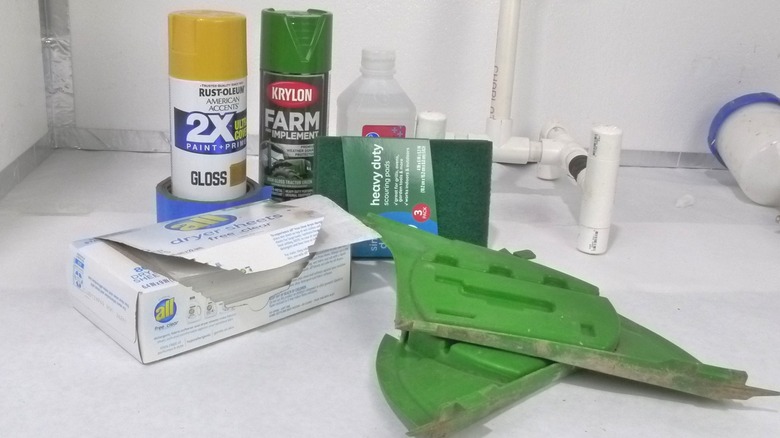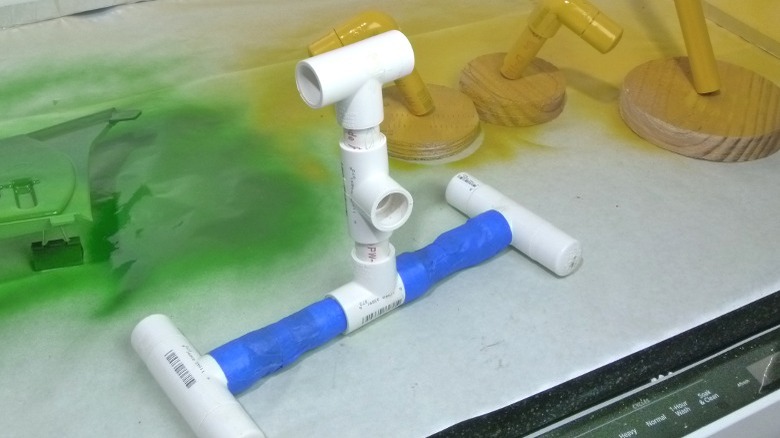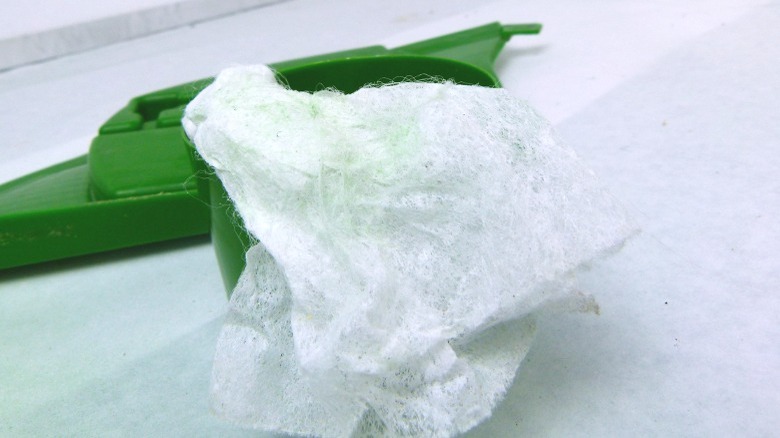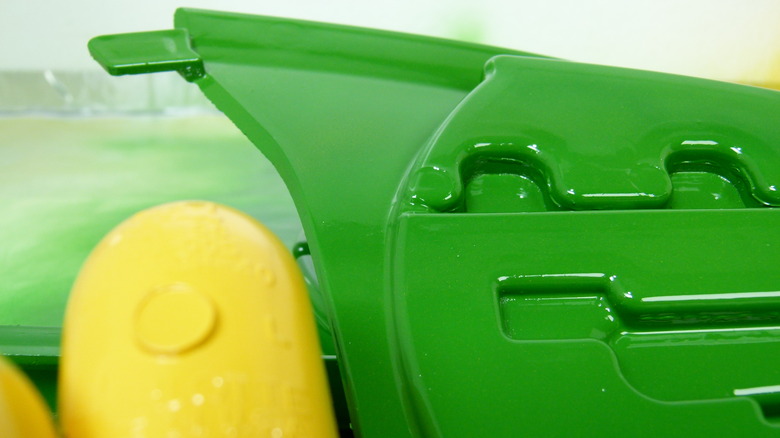We Tested The Dryer Sheet Hack To Make Painting Plastic Easier & We're Not Ruling It Out
Painting a plastic Adirondack chair or plant pot is an act of optimism. If you have much experience, you probably know that everything must go right, or everything will go wrong. So, any advantage you can give yourself might be worthwhile. So when we discovered a hack claiming you can simplify painting plastics if you rub them down with a used fabric softener sheet, it seemed a little kooky — and worth a try.
TikTok and the lifehack zeitgeist are full of endlessly repeated bits of ingenuity that don't always pan out. There are excellent paint hacks out there, but one with few online mentions didn't seem too promising. After all, you can find at least two people saying just about anything online. There's a whole Reddit dedicated to dimwitted lifehacks, including the occasional fake that trolls the credulous.
But optimism (and desperation) mothered many inventions of antiquity; somebody had to try it first. "He was a very valiant man," James I is credited with saying, "who first adventured on eating of oysters." As such, we were happy to validate some pioneer's effort if it meant one fewer frustrating afternoon failing to make paint stick to plastic. And there was some reason to be optimistic. Liquid fabric softener is often used as adhesion promoters (such as Bulldog), which are added to paint to help it bond to plastic. Adhesion promoters, it turns out, can also be used for surface prep, so maybe fabric softener can, too.
We could no longer avoid painting ... or dryer sheets
In a lifetime spent avoiding paint, one doesn't end up with much paint sitting around, so we bought a couple of cans with paragraph-length names: Rustoleum American Accents 2x Ultra Cover Paint + Primer Gloss in marigold (that's yellow, Lisa Simpson), $6.48 at Lowe's, and Krylon Farm and Implement High Gloss Tractor Green with Premium Weather Guard Protection (John Deere green, $6.98 at Lowe's). We also didn't have any dryer sheets on hand. (They tend to come in fragrances that can be detected from low earth orbit, all of which are about as authentic as that inexplicable "banana" candy flavor.) So we bought Free Clear Dryer Sheets ($4.97 at Amazon), which claim to be 100% free from fragrances and dyes. Finally, we picked up some generic heavy-duty scouring pads for scuffing plastic surfaces, a necessary prep step.
But what to paint? We settled on two things: a DIY guitar stand made of PVC fittings from Lowe's and a 20-year-old Peg Perego John Deere ride-on toy tractor that's served three rowdy children, and has been repaired, souped-up alarmingly, souped back down again, repaired some more, and left outside for years on end. We disassembled the guitar stand and removed two similar panels from the toy tractor. These we cleaned and scuffed, then rubbed with a dryer sheet (used for 40 minutes in a hot dryer, but still reasonably stiff with whatever magic infuses them).
Painting, and a mysterious film
Before painting, we noticed some residue on the parts that had been rubbed with the dryer sheet. This thin, waxy sheen didn't change the color or conceal scuff marks but was noticeably different in feel from the un-rubbed pieces. Looking closer, we discovered the fabric softener sheet had picked up some of the green color from the tractor panels — something that hadn't happened at all during the earlier cleaning. This is the sort of thing you'd expect from a product like Bulldog adhesion promoter, which has an ingredients list reminiscent of the paint solvent shelves at Home Depot: Toluene, Methyl ethyl ketone, Butyl acetate, Xylene, Divinyl benzene, and other goodies. It doesn't appear that All Free Clear contains any of these, but it does contain quaternary ammonium salts, which have been shown to soften many plastics.
We painted these parts individually in a previously improvised knock-down spray booth. (Of course, no one ever paints anything "individually" because you're inevitably also painting half of the things in your immediate environment, including your arms. Hence, the spray booth.) We perched the tractor panels on supports made from binder clips, a particularly unstable use we won't be bragging about on TikTok. The PVC parts were held up on nails through circles of wood, which worked somewhat better if you don't mind occasionally chasing the object you're painting around in circles.
Try dryer sheets (and oysters) for yourself
Interestingly, there was no noticeable difference between the pieces treated with the dryer sheet. The tractor panels got four thorough coats, and the PVC got two quick coats for the additional data point. We also poked, prodded, and flexed the materials to give the paint every opportunity to let go, and it didn't.
Now, for the odd part: We think you should do it anyway. It seems possible that the success of both methods had to do with the care taken during preparation and the quality of the paints. However, the dryer sheets left a coating that appeared to dissolve the surface of the plastic very slightly. And the fatty acids commonly used in dryer sheets (but unlisted if there are no related health concerns) are plasticizers, used to soften and improve the flexibility of plastics and rubber. They are also industrial wetting agents, substances that reduce surface tension and improve the penetration of liquids. Acetone, which has the effect of softening or dissolving some plastics, was found in a study of dryer vent emissions, but it is not clear to what degree (if any) it is present in dryer sheets.
So it's possible that a few common ingredients in dryer sheets can help paint adhesion. Meanwhile, you have deck chairs to paint and some used dryer sheets in search of a purpose. Why not invest a little time (and not a cent) and try this hack out for yourself?



